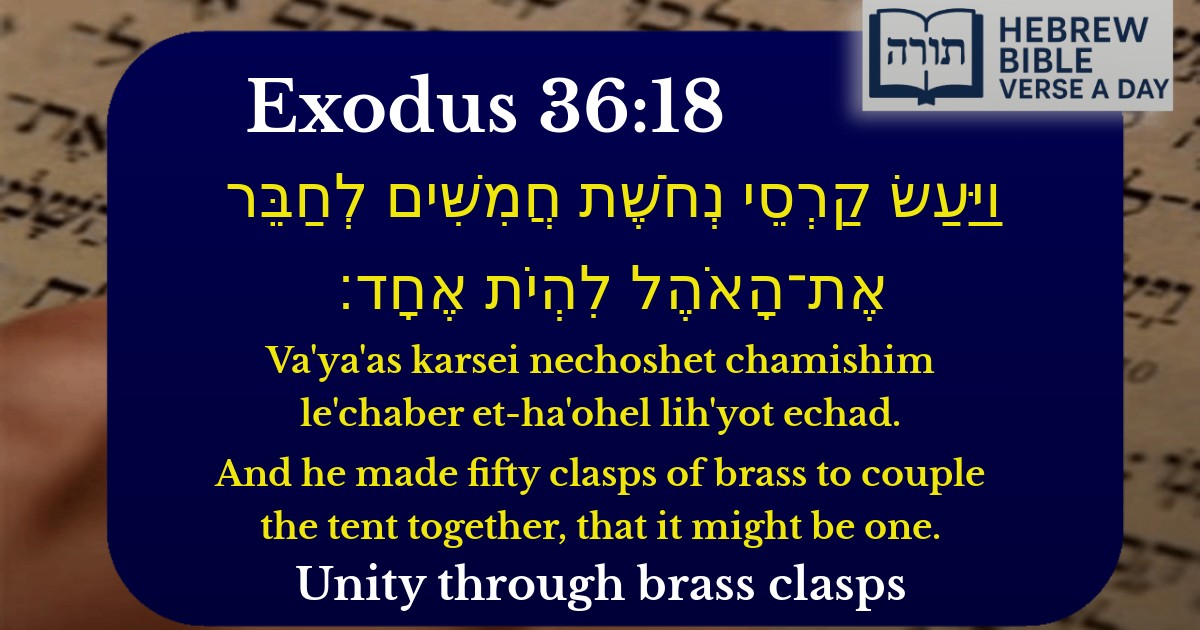Join Our Newsletter To Be Informed When New Videos Are Posted
Join the thousands of fellow Studends who rely on our videos to learn how to read the bible in Hebrew for free!
Hebrew Text
וַיַּעַשׂ קַרְסֵי נְחֹשֶׁת חֲמִשִּׁים לְחַבֵּר אֶת־הָאֹהֶל לִהְיֹת אֶחָד׃
English Translation
And he made fifty clasps of brass to couple the tent together, that it might be one.
Transliteration
Va'ya'as karsei nechoshet chamishim le'chaber et-ha'ohel lih'yot echad.
Hebrew Leining Text
וַיַּ֛עַשׂ קַרְסֵ֥י נְחֹ֖שֶׁת חֲמִשִּׁ֑ים לְחַבֵּ֥ר אֶת־הָאֹ֖הֶל לִהְיֹ֥ת אֶחָֽד׃
Parasha Commentary
📚 Talmud Citations
This verse is not quoted in the Talmud.


Explanation of the Verse
The verse (Shemot 36:18) describes the making of fifty copper clasps (karsei nechoshet) to join the curtains of the Mishkan (Tabernacle) together, ensuring it would be unified as one structure. This detail is part of the broader account of the construction of the Mishkan, emphasizing precision in fulfilling the divine command.
Rashi's Commentary
Rashi (Shemot 36:18) explains that these clasps were used to connect the two large sets of curtains (each consisting of five curtains joined together) that formed the roof of the Mishkan. The clasps ensured that the entire structure remained unified, symbolizing the harmony and cohesion required in sacred service.
Symbolism of the Clasps
Midrashic Insight
The Midrash Tanchuma (Pekudei 5) connects the fifty clasps to the fifty gates of understanding (binah), suggesting that the Mishkan’s construction reflects deeper spiritual wisdom. The unification of the Mishkan parallels the unification of divine wisdom in the world.
Halachic Perspective
Rambam (Hilchos Beis HaBechirah 1:15) derives from this verse the principle that sacred structures must be built with precision and care, ensuring all components fit together properly. This underscores the importance of attention to detail in fulfilling mitzvos.